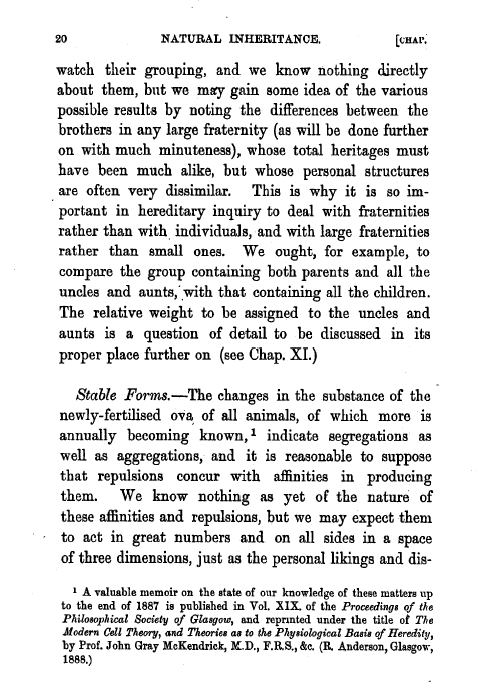20 NATURAL INHERITANCE. [CHAP.'
watch their grouping, and we know nothing directly about them, but we may gain some idea of the various possible results by noting the differences between the brothers in any large fraternity (as will be done further on with much minuteness), whose total heritages must have been much alike, but whose personal structures are often very dissimilar. This is why it is so important in hereditary inquiry to deal with fraternities rather than with, individuals, and with large fraternities rather than small ones. We ought, for example, to compare the group containing both parents and all the uncles and aunts,' with that containing all the children. The relative weight to be assigned to the uncles and aunts is a question of detail to be discussed in its proper place further on (see Chap. XI.)
Stable Forms.-The changes in the substance of the newly-fertilised ova of all animals, of which more is annually becoming known,-' indicate segregations as well as aggregations, and it is reasonable to suppose that repulsions concur with affinities in producing them. We know nothing as yet of the nature of these affinities and repulsions, but we may expect them to act in great numbers and on all sides in a space of three dimensions, just as the personal likings and dis
1 A valuable memoir on the state of our knowledge of these matters up to the end of 1887 is published in Vol. XIX. of the Proceedings of the Philosophical Society of Glasgow, and reprinted under the title of The
Modern Cell Theory, and Theories as to the Physiological Basis of Heredity, by Prof. John Gray McKendrick, M.D., F.R.S., &c. (R. Anderson, Glasgow, 1888.)

